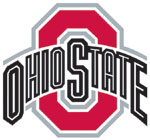10-year-old girl saves soup kitchen
A simple and inspiring story to start your year
Recently, a 10-year-old girl named Liz Feller received $60 as a birthday gift from her friend. Liz told a local reporter that it was too much money for a child to spend on herself. Instead, Liz wanted to find a charitable way to use it.
Soon after that, the fifth-grader learned about the financial struggles at Peekskill's soup kitchen near her house. The nonprofit that runs this important service had recently lost a $20,000 annual grant from Kraft Foods. The church was unable to make up the difference on its own to operate the $36,000 annual budget of the kitchen. So, the soup kitchen needed to raise more than thirty thousand dollars.
Liz's first thought was to simply donate the money. But then it dawned on her that she could do a lot more to help if she got a little creative, and so Liz invested the money into buying beads of assorted colors, shapes and sizes. She even asked her grandmother to give her money for Christmas so she could amass a larger collection. [While the story doesn't say, I bet Liz used the first $60 as a challenge grant opportunity and hit her grandma up for another $60 - or maybe even $120.]
She ended up donating a grand total of $863, which she raised by making and selling beaded jewelry... Liz sold her creations to friends, her mom's co-workers and fellow members of the Reformed Church of Cortlandtown. The jewelry became so popular, she had a hard time keeping up with the orders.
That's a fanfastic return of 400% on her $120 investment. But, what if we were honest and assume she received additional donations of professional services or other help worth about $400. That would be a fundraising ratio of 0.60 - or sixty cents to raise a dollar. There are some critics who would scream "Scandal!" as soon as they saw numbers at this level.
But, using a fundraising ratios is sometimes too simple of an ROI measurement.
The Journal News reported that Liz has been the largest single fundraising campaign contributor. The additional media coverage of Liz's efforts have helped fuel more more giving and those benefits are often not included in the ROI analysis.
The Rev. Douglas Leonard, the church pastor, remembers when Liz first told him about her idea. She and her mother had taken him out for lunch at a diner, and the youngster "was literally bouncing up and down in the seat telling me about it," he said.
Leonard is also the president of the Peekskill Area Pastor's Association, an interfaith organization known as PAPA, which started the lunch program in 1981 and has worked ever since to sustain it. It was PAPA who asked the leaders of its numerous churches, mosques and synagogues to solicit donations from its members for the soup kitchen.
What followed was a miraculous rally among 80 or so houses of worship and hundreds of individuals from throughout the greater Peekskill area. As a result, the campaign has now raised more than $32,000 and is beginning to look more for more secure funding options for next year.
Nice work Liz. You are an inspiration to fundraisers, donors, and stakeholders in thousands of nonprofit organizations across the world.
Check out a video version of this story here.Donations to the Noontime Meals Program may be sent to The Rev. Mark Ioset, treasurer, Peekskill Area Pastor's Association, Peekskill Presbyterian Church, 705 South St., Peekskill, NY 10566To discuss sponsorship, contact Dan Alverio at the Salvation Army, 914-737-0280. Salvation Army, 117 Nelson Ave., Peekskill, NY 10566










